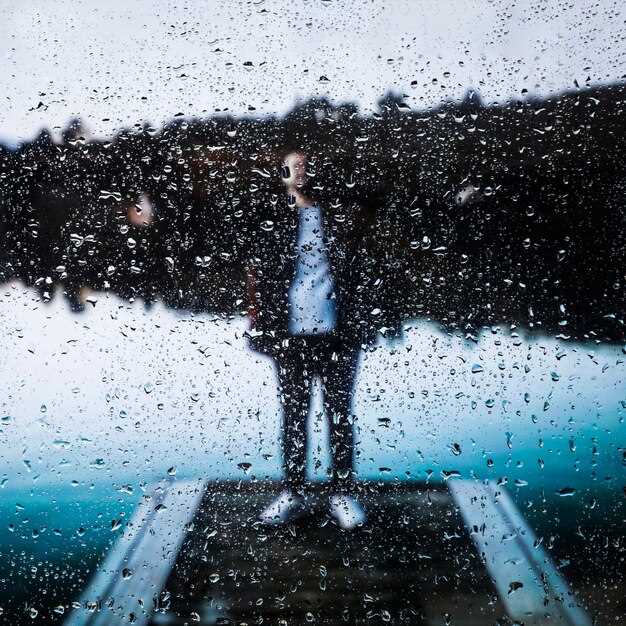
In various contexts, whether it be outdoor sports, hiking, or driving, being able to navigate through challenging conditions brought on by rain and fog is crucial for safety and performance. Adverse weather not only impacts visibility but also affects traction and overall control, leading to the necessity of advanced preparation strategies. Understanding how to effectively prep for these unpredictable elements can make the difference between a successful outing and a hazardous experience.
When rain pours and fog descends, the strategies we employ must adapt to maintain effectiveness. For instance, in driving scenarios, it is essential to adjust speed and increase following distance. Similarly, athletes and outdoor enthusiasts need to modify their techniques in response to slippery surfaces and reduced visibility. Emphasizing the importance of adaptability, this article will dive into specific adjustments that can be made to enhance safety and performance when faced with these challenging weather situations.
Additionally, effective prep work can involve choosing the right gear, utilizing technology for navigation, and implementing specific training for adverse conditions. By equipping ourselves with the right tools and knowledge, we can confidently face what nature presents and ensure our activities continue smoothly, even in the most difficult conditions.
Optimizing Bow Prep for Inclement Weather

Preparing your bow for inclement weather is crucial to ensure consistent performance during rain or fog conditions. Proper bow prep involves several key adjustments to maintain accuracy and reliability when facing challenging environmental factors.
1. String and Cable Treatment: Moisture can compromise the integrity of bow strings and cables. Apply a high-quality, water-resistant wax to the bowstring to prevent fraying and maintain its tension. This treatment helps repel water and keeps the strings dry, reducing the risk of slippage or breakage during use.
2. Arrow Selection: Choose arrows designed for adverse weather conditions. Carbon and alumina shafts are typically less affected by moisture than traditional wood. Consider using arrows with durable fletchings that resist water absorption, such as synthetic vanes, as they maintain stability and accuracy even in rainy or foggy conditions.
3. Grip and Release Aids: Ensure your grip is prepared for wet conditions. Invest in grips made from non-slip materials, providing reliability even when wet. If using a mechanical release aid, check for moisture resistance and ensure it operates smoothly without jamming due to rain.
4. Sight Calibration: Fog and rain can distort visibility, making precise shooting more challenging. Before heading out, calibrate your sight for the expected conditions to account for potential changes in light and distance visibility. Use brighter pins or add reflective tape to enhance visibility in low-light scenarios.
5. Storage and Transport: Protect your bow and equipment during transport by using waterproof cases or bags. After use in wet conditions, dry your bow completely before storing it to avoid damage from moisture buildup. Regular maintenance and inspection are vital to ensure your gear remains in top condition.
By focusing on these essential aspects of bow prep, archers can effectively adapt to inclement weather, improving their overall performance and confidence in challenging conditions.
Tactical Adjustments for Decreased Visibility
In adverse weather conditions such as rain and fog, visibility can significantly decrease, posing challenges for navigation and strategy. Effective tactical adjustments are essential to ensure safety and maintain operational effectiveness. One of the primary considerations is the preparation of the equipment, especially when using a bow for activities such as boating or archery.
When visibility is compromised, it is crucial to prep your equipment meticulously. Ensure that all gear is in optimal condition, with appropriate lighting and reflective materials to enhance visibility. Using brightly colored or fluorescent equipment can help counterparts in spotting you even in low-light conditions.
Additionally, adapting your positioning and movement becomes vital. Create a plan that allows for slower, more deliberate actions to account for unseen obstacles or hazards. Keeping a safe distance from others can prevent collisions, and employing auditory signals can aid in communication when visual cues are limited.
Utilizing GPS and navigational aids that function well in poor weather conditions is also essential. Ensure that your technology is updated and functioning before embarking on any venture. These tools can help maintain a sense of direction and situational awareness, even when visual references are lost.
Lastly, leveraging teamwork can significantly improve safety. Conduct briefings among team members regarding altered strategies for operating under decreased visibility. Encourage clear communication and designate roles that optimize each individual’s strengths, ensuring that everyone is aware of their responsibilities and can act swiftly in response to changing conditions.
Choosing the Right Gear for Weather Variability

When engaging in outdoor activities, particularly in unpredictable weather scenarios such as rain and fog, selecting the appropriate gear is crucial for both safety and performance. The right equipment can significantly enhance your experience and effectiveness in challenging weather conditions.
Here are key considerations when choosing your gear:
- Waterproof Clothing: Opt for jackets and pants made from breathable, waterproof materials. Look for features such as sealed seams and adjustable hoods to ensure maximum protection against rain while allowing sweat to escape.
- Footwear: Select footwear designed for wet conditions. Waterproof boots with good traction are essential for maintaining stability on slippery surfaces. Ensure they are also breathable to keep your feet comfortable during prolonged use.
- Visibility Gear: In foggy conditions, visibility becomes a concern. Utilize bright colors and reflective materials in your clothing and gear. Accessories like vests or bands can significantly improve your visibility to others.
- Bow Protection: If using a bow under variable weather, consider using a waterproof bow case to protect against moisture. Additionally, apply a weather-resistant wax to your strings and ensure that other sensitive components are shielded from the elements.
In addition to the essentials above, consider the following items to further enhance your outdoor experience:
- Layering System: Incorporate a layering approach to your clothing. Start with moisture-wicking base layers, followed by insulating mid-layers, and topped with a waterproof and windproof outer layer.
- Headwear: A waterproof hat with a wide brim can shield your face from rain and improve your overall visibility in fog.
- Accessories: Don’t forget gloves that retain warmth while also providing grip. Hand and foot warmers can be exceptionally useful during cold, wet weather.
- Emergency Gear: Carrying a compact emergency kit, including a whistle, flashlight, and first-aid supplies, is wise. These items can be crucial if conditions rapidly deteriorate.
By carefully selecting your gear based on the variability of weather conditions, you can maintain a focus on your performance while ensuring safety and comfort. Embrace the challenges posed by rain and fog with the right equipment, allowing you to make the most out of your outdoor experiences.


